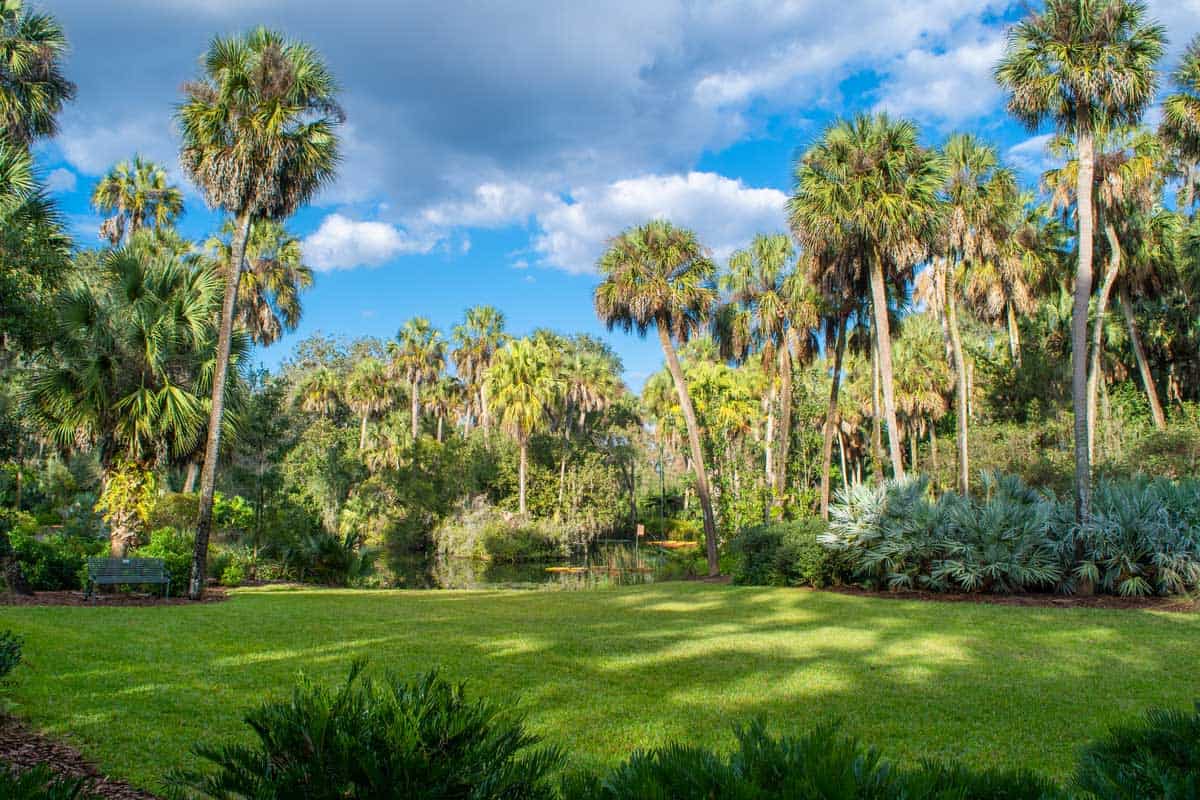 Palm trees might conjure up images of warm weather and sandy beaches for you. These trees have played an important role in history as a symbol of peace and a sign of triumph. Many palm trees are also a plentiful food source. There are more than 2,500 species of palm trees that can grow in various climates. They can live for a hundred years and grow up to 200 feet tall. Given their ability to survive, a palm tree's root system must be amazingly strong. Does this strength mean that palm tree roots are invasive?
Palm trees might conjure up images of warm weather and sandy beaches for you. These trees have played an important role in history as a symbol of peace and a sign of triumph. Many palm trees are also a plentiful food source. There are more than 2,500 species of palm trees that can grow in various climates. They can live for a hundred years and grow up to 200 feet tall. Given their ability to survive, a palm tree's root system must be amazingly strong. Does this strength mean that palm tree roots are invasive?
Most palm trees don’t have invasive roots. Palm trees' root systems grow laterally in the top few feet of soil. Palms have many small roots that are unlikely to overrun a space and cause issues.
There are so many different types of palm tree species, but they all have the same type of root system. Palms' roots are very different compared to other trees. Keep reading this post as we answer your questions and address concerns about these tropical beauties.
What Kind Of Root System Does A Palm Tree Have?
The palm tree root system is a bit sporadic. Palms don’t have a central, dominant taproot like other trees. Rather, palm trees have hundreds of small roots that grow from the root-initiation zone at the bottom of the trunk.
Roots of palm trees grow in thin strands from the base of the tree's root ball. The roots grow along with the tree by spreading themselves horizontally across the soil. It's common for these roots to be visible above the ground. The roots stay thin and regularly regenerate. All the roots feed on the soil and expand to find sources of water.
How Far Do Palm Tree Roots Spread?

Roots of palm trees spread out from all around its trunk. The roots will extend at least as far as the branches. Typically, roots will spread as wide as the canopy of fronds but can extend out to 50 feet in search of water.
Can Palm Tree Roots Damage Concrete?
It’s highly unlikely that a palm tree’s roots will damage concrete. The roots for palm trees stay the same diameter for the life of the root. There are many roots but they are thin. Other trees have roots that grow thicker as they mature, which can lead to a crack in a sidewalk or concrete surface.
Even though it’s unlikely that a palm root will cause a crack in the concrete, you should consider planting or transplanting a species 12 or more feet away from a hard surface. The distance will allow the roots to spread at a healthy rate and prevent unwanted concrete damage.
Can You Plant Palm Trees Close To Your House?

You shouldn’t plant a palm tree, or any other tree for that matter, too close to your home. The canopy of a palm tree should be able to fully spread out and clear a roofline. And, even though palm roots are not known to cause damage to concrete or pipes, you don’t want them crowding any structure.
When planning where to plant your palms be aware of the species' full growth height potential and rate of growth.
Give your tropical trees room to breathe.
Do Palm Trees Fall Over Easily?
Palm trees are sturdy and don’t easily fall over. Palms grow in areas like Florida and survive hurricane-force winds regularly with no problem.
That said, several situations can weaken the root system or the health of the tree and put your palm at risk of falling.
Here are examples of situations where a palm loses strength and is at risk topple over:
- A tall or large newly planted palm without structural support
- Palms that are rooted in shallow soil that gets washed away in a storm
- Trees infected with crown drop where the trunk decays on the inside
- A borer beetle can carve tunnels inside the truck and cripple the palm's core
- Low or freezing temperatures can damage or kill a palm
Palm trees can sway and bend in strong winds and remain perfectly intact. Some species can even survive in cooler climates. Yes, cooler climates. Read our post Can Palm Trees Survive Snow to learn about cold-hardy palms and how to care for them.
If your palms are healthy, free of disease and have a strong root system, they will stand tall for years to come.
How Much Space Does A Palm Tree Need?

A palm tree needs anywhere from 100 square feet to 900 square feet of space to grow. There are a variety of palms that grow to many different heights. When choosing your palm, take into consideration the area you are planning to plant. Smaller trees will do fine in a smaller space but the palms that grow up to 50 feet will need a wide-open space for the roots to stretch out.
If space is a concern for you, choose a smaller palm. A shorter palm with a smaller canopy will need less lateral space for the roots to extend. There are also palms that grow more like shrubs if the overall height is of concern for you.
You should maintain your palms with regular pruning, so the branches get plenty of sunlight to grow. Check out our post on When to Trim Palm Trees for guidance on how and when to cut back your palms.
How Much Does It Cost To Cut Down A Palm Tree?
In our research, we’ve seen estimates for palm tree removal that range from $400 to $2,000. It’s a wide range because several factors are calculated into the price.
Here are some factors that can add up quickly:
Tree Height
The taller your tree is, the more expensive it will be to remove. Tree removal companies might charge you per foot.
Tree Health
If your tree is infected, leaning or dying, it will cost more, as it’s a bigger risk to safely cut it down.
Tree Diameter
Your palm might have a thick and hard trunk. It will need to be cut into sections which creates more labor and a higher cost.
Tree Location
The area around where your palm is planted can add a significant cost to the removal bill. If your palm is in a wide-open space it will be easier to access and won’t add too much to the price. If your tree is near your home or a power line, it will require more effort and expertise which will add to the final price.
Storm Damage
If your palm tree was damaged in a storm or has fallen on your home, you should check with your insurance company about the cost of removal. In most cases, you’ll be stuck with the bill, but it’s worth asking if your homeowners’ insurance can help cover some of the costs.
Tree removal should be left to the professionals and it can be expensive. Take care when choosing where to plant trees and keep them well-maintained.
Let Roots Grow

As you finish reading this post, we hope that you have a better understanding of a palm tree’s root system. There’s no need for you to worry about invasive roots from these trees. Palm trees can add a lush and tropic landscape to just about any type of yard.
Remember to choose a palm species that is the right size for your space, so the palm’s roots have room to expand. And take care to plant your palms away from a sidewalk or your home to ensure the root system doesn’t interfere.
Your palm should give you decades of enjoyment!

Silver Bismarck Palm, how far away to plant a small (20 gallon pot) S.B. palm from a septic drain field.
Unfortunately will need to cut the Bismarck Palm down before it reaches maturity if it will become an issue.